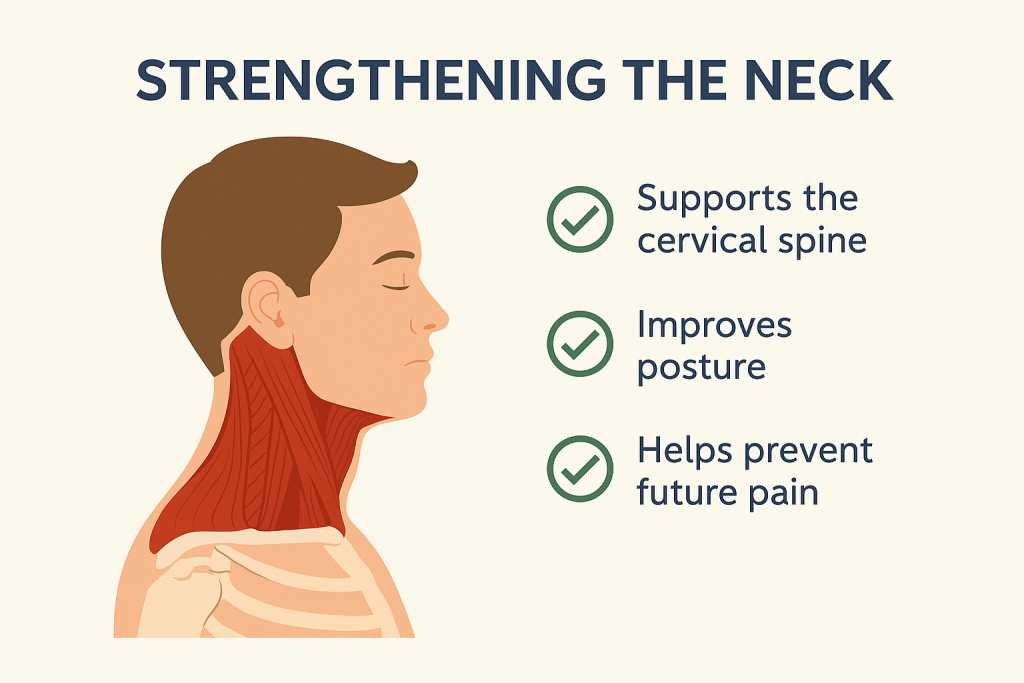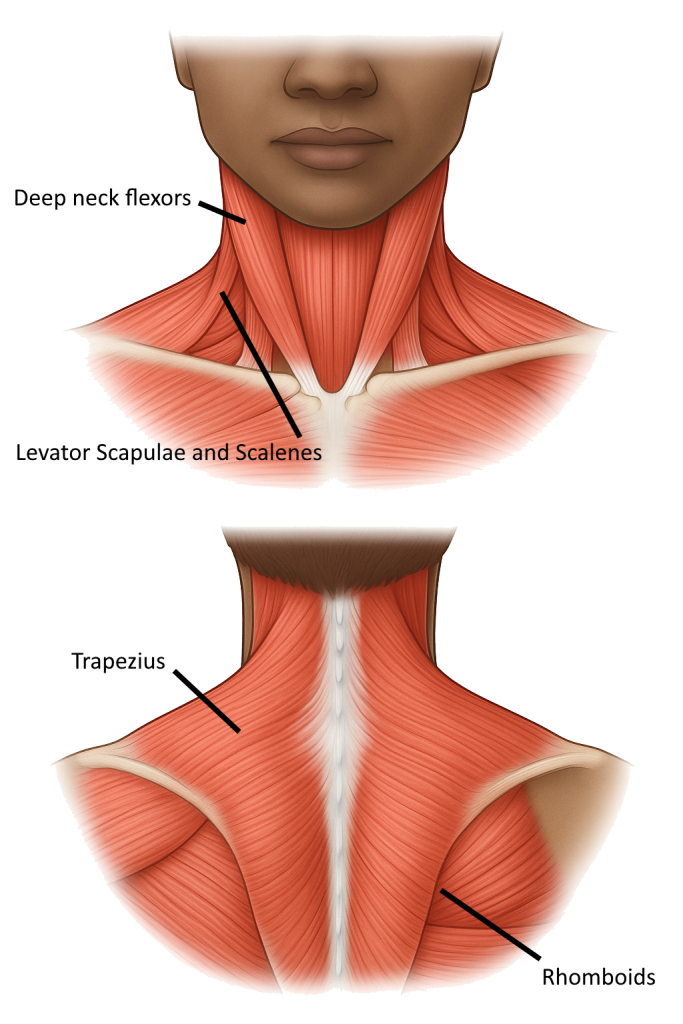Still scared to move after whiplash? You’re not alone, but staying stuck in that fear can slow your healing. In this post, I break down how I rebuilt strength in my neck, why it mattered, and the safe, simple exercises that helped me finally move without pain.
Table of Contents
ToggleOne of the biggest shifts in my recovery came when I stopped being afraid to move. After a whiplash injury, it’s completely normal to feel cautious, maybe even scared about using your neck. After all, movement may have triggered pain in the past, or the injury itself happened during a moment of motion. But staying in that mindset too long can hold you back.
At some point, you’ll need to rebuild the strength that was lost not just to feel better now, but to protect your neck long-term.

Don’t Rush Into It
Let’s be clear: this isn’t about diving into intense workouts or throwing weights around. Healing muscles and connective tissue need time and patience. Start too hard, too fast, and you’ll likely set yourself back. But doing nothing also keeps you stuck.
Think of it like rehabbing a sprained ankle you don’t run on it the next day, but you also don’t keep it in a cast forever. You build up slowly. The same applies to your neck.
Why Strength Matters
After an injury, muscles around the neck can weaken or tighten up to “protect” you. Some muscles may even begin to overcompensate, pulling your posture out of alignment. This imbalance can cause ongoing tension and pain even after the original injury has healed.
Gentle, targeted strengthening helps restore balance, supports your cervical spine, and gives your body the stability it needs to move freely again.
A stronger neck is a more confident neck.
The Fear of Moving
If you’ve been dealing with whiplash for a while, you might’ve started avoiding certain movements altogether turning your head, lifting something heavy, even exercising. It makes sense: your brain starts associating those movements with danger.
But here’s the thing avoiding movement can sometimes do more harm than good. Imagine a rusty door hinge. If you never open it, it gets stiffer and stiffer. But if you gently work it back and forth each day, it starts to move again.
Start Small, Stay Consistent
Some practical tips to begin strengthening safely:
-
- Start with isometric exercises. These are simple holds without much movement, and they help wake up the deep neck stabilizers.
-
- Focus on posture. Strengthening postural muscles (like your upper back and core) helps take pressure off your neck.
-
- Use resistance bands or light weights. Later down the line, these can help build endurance and coordination.
-
- Stretch gently. A balanced routine includes both strength and flexibility.
-
- Be mindful of form. Always move slow and controlled, especially with neck movements.
-
- Track your progress. Even writing down how a certain exercise felt can give you confidence over time.
Whiplash Workout Routines
Recovering from whiplash takes patience, consistency, and the right kind of movement. Below are two free routines you can start with right away.
-
Beginner Neck Routine – Daily Reset (Free)
A gentle daily routine to reduce stiffness, calm the nervous system, and rebuild trust in movement. -
4-Week Neck Recovery Plan (Free)
A progressive rehab plan to strengthen your neck, improve posture, and transition out of the early recovery phase.
💪 Bulletproof Neck Plan – $5 (Premium)
Ready to fully stabilize your neck, improve long-term posture, and prevent future flare-ups?
This advanced program includes:
✅ Progressive strength training (with and without weights)
✅ Posture-focused exercises
✅ Functional core and shoulder work
✅ A guided stretch & mobility recovery routine
✅ Progress tracking sheet
One-time payment. Lifetime access. No fluff—just real results for long-term recovery.
Muscles to Target During Whiplash Recovery
To recover from whiplash effectively, it’s important to strengthen the muscles that stabilize your head, neck, shoulders, and core. These muscle groups support posture, reduce strain, and help prevent future injury.
Deep Neck Flexors
These small muscles at the front of the neck help support the weight of the head and are often weakened after whiplash.
How to train them: Chin tucks and gentle head nodding movements.
Trapezius (Middle and Lower Fibers)
While the upper traps are often tight and overactive, strengthening the middle and lower parts of the trapezius improves posture and reduces neck tension.
How to train them: Scapular wall slides, band pull-aparts, and prone Y raises.
Rhomboids
Located between the shoulder blades, the rhomboids help keep the shoulders pulled back and the upper spine aligned.
How to train them: Rowing exercises and resistance band retractions.
Levator Scapulae and Scalenes
These muscles assist with neck movement but are often tight and overused in people with whiplash. Focus on stretching rather than strengthening.
How to address them: Gentle side neck stretches and breath-focused mobility work.

Core Muscles (Transverse Abdominis, Obliques)
A strong and stable core helps reduce load on the neck by improving overall body mechanics.
How to train them: Dead bug, bird-dog, and modified planks.
Serratus Anterior
This muscle helps stabilize the shoulder blade and plays a key role in healthy neck and shoulder function.
How to train it: Wall push-ups, serratus punches, and scapula slides.
Listen to Your Body But Don’t Let Fear Decide
Pain is a guide, not a stop sign. A little soreness or fatigue is normal when you start using muscles again. Sharp, shooting pain is not. Learn to listen to your body without letting fear run the show.
And remember, you don’t have to do this alone. Consider working with a physiotherapist or movement specialist who understands neck rehab and whiplash recovery. A good coach can help you feel safe while making real progress.
